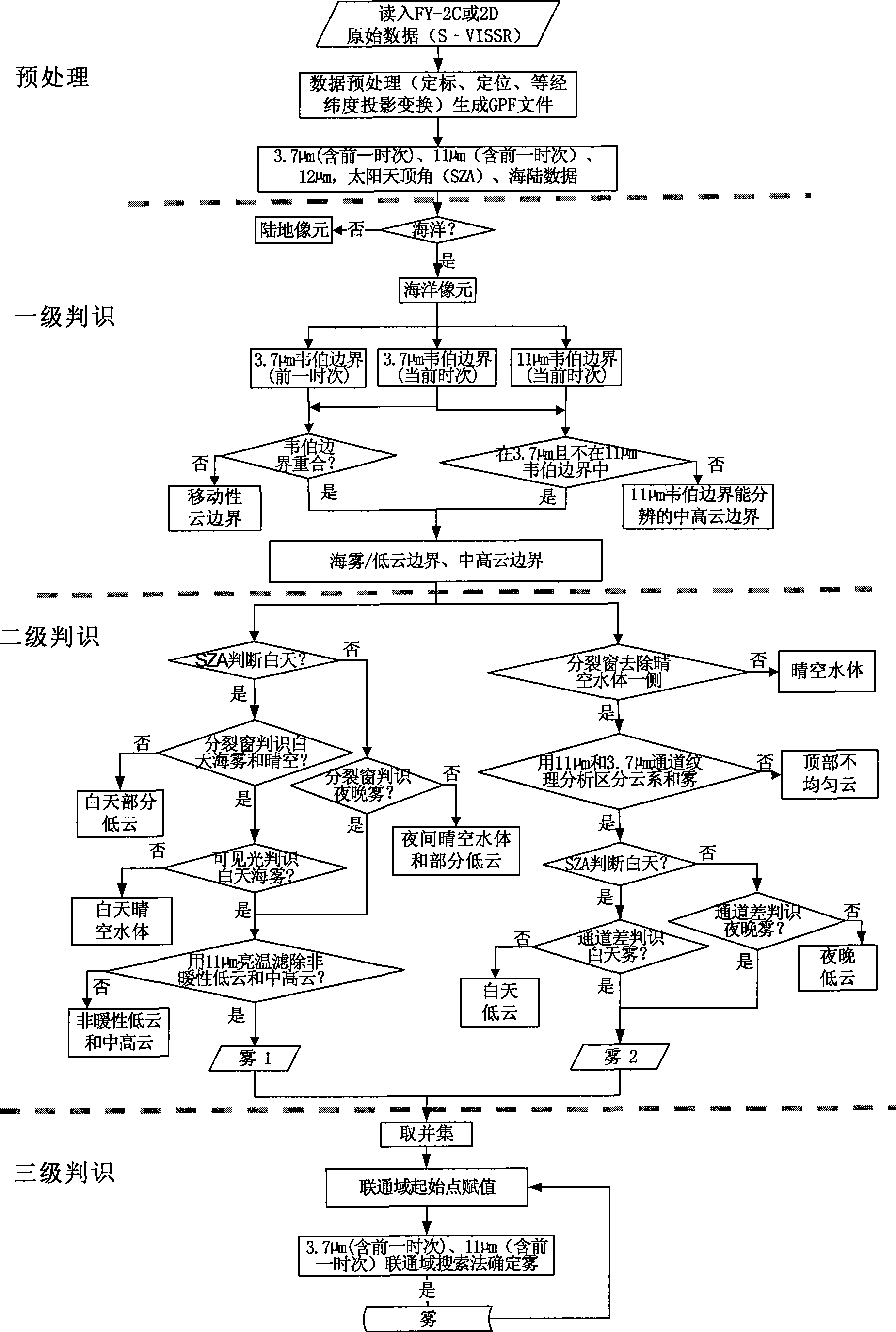Detection method for remote sensing day and night sea fog by stationary weather satellite
A geostationary meteorological satellite and detection method technology, applied in the field of marine environment monitoring, can solve the problem of inability to distinguish between low and medium clouds and sea fog, and achieve the effect of large coverage area and high time resolution
- Summary
- Abstract
- Description
- Claims
- Application Information
AI Technical Summary
Problems solved by technology
Method used
Image
Examples
Embodiment Construction
[0016] Method steps of the present invention are as follows:
[0017] 1. After data preprocessing, the Weber boundary method is used to conduct a first-level judgment on the boundary of sea fog, and the boundary of sea fog / low cloud and medium-high cloud is obtained, which is the boundary between sea fog / low cloud, medium-high cloud and clear sky water body the border between.
[0018] 1) Read in the raw data files (S-VISSR) of the FY-2C and FY-2D stationary meteorological satellites received and processed by the digital visual broadcasting system (DVBS) of the stationary meteorological satellites, and perform calibration and positioning of the S-VISSR data, data Correction, equal longitude and latitude projection and other preprocessing to obtain the projected GPF format file containing 5 channel data;
[0019] 2) From the GPF file, read in the current and previous time data of the mid-infrared 3.7μm channel, the current time and previous time data of the 11μm channel of the...
PUM
| Property | Measurement | Unit |
|---|---|---|
| Wavelength | aaaaa | aaaaa |
| Wavelength | aaaaa | aaaaa |
Abstract
Description
Claims
Application Information
 Login to View More
Login to View More - R&D
- Intellectual Property
- Life Sciences
- Materials
- Tech Scout
- Unparalleled Data Quality
- Higher Quality Content
- 60% Fewer Hallucinations
Browse by: Latest US Patents, China's latest patents, Technical Efficacy Thesaurus, Application Domain, Technology Topic, Popular Technical Reports.
© 2025 PatSnap. All rights reserved.Legal|Privacy policy|Modern Slavery Act Transparency Statement|Sitemap|About US| Contact US: help@patsnap.com

